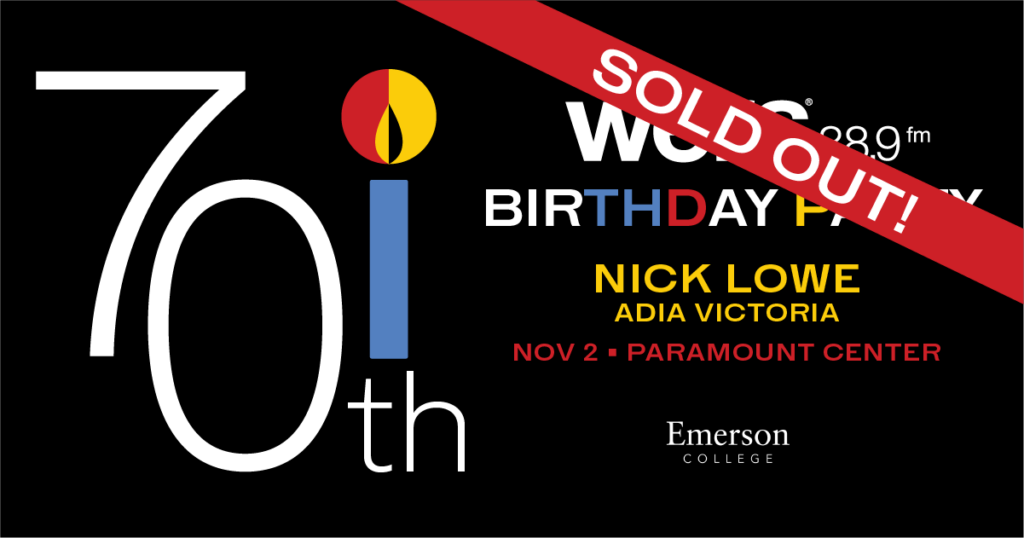
By Claire Dunham, Music Coordinator
Each week of Black Music Month, we open the 88.9 Vault of Soul, profiles of iconic soul pioneers. Continue reading to take a deep dive into Diana Ross’ incredible legacy.
BIOGRAPHY
Diane Ernestine Earle Ross, who is best known as Diana Ross, was born on March 26th, 1944 in Detroit, Michigan. She grew up in the North End neighborhood, where she first launched her illustrious music career. In 1959, Ross became a founding member of the Primettes, a musical trio. With the help of soul sensation Smokey Robinson, the group was introduced to Berry Gordy of Motown Records. Gordy saw the girl group’s potential, but refused to work with them until they graduated from high school.
THE SUPREMES AND MOTOWN RECORDS
After their graduation, the Primettes were officially signed to Motown Records. In 1961, the pop-soul trio, consisting of Ross, Mary Wilson, and Florence Ballard, was renamed The Supremes. Throughout the 60s, the girls enchanted audiences with their balanced harmonies, velvety vocals, synchronized movements, and long glittery gowns.
Ross became the group’s lead vocalist—her effortlessly sweet voice was paired with timeless lyrics about heartbreak, longing, and sensuality. The 1964 hit songs “Baby Love” and “Where Did Our Love Go” put The Supremes on the map and helped catapult Ross into stardom.
The group’s success continued to grow, and altogether, they had 12 number one songs from 1964 to 1970. In 1967, Ballard was replaced by Cindy Birdsong (of Patti LaBelle and The Bluebelles), and The Supremes were renamed once again—they became known as Diana Ross and the Supremes.
SOLO CAREER
In 1970, Ross left the group and started her iconic solo career with a self-titled debut album. The record featured “Ain’t No Mountain High Enough” and “Reach Out And Touch (Somebody’s Hand),” two beloved songs that showcased Diana’s incredible belting abilities. Both tracks are rife with showstopping vocal runs and uplifting lyrical themes, two elements that would eventually become trademarks of the singer’s discography.
DIANA ROSS: STAR OF STAGE AND SCREEN
Diana’s first Television special Diana aired in 1971. In 1972, Ross made her film debut in Lady Sings the Blues. She portrayed the legendary blues singer Billie Holiday in the biopic. Throughout the movie, Diana performs a variety of Holiday’s songs, including “Good Morning Heartache” and “Lady Sings The Blues,” with Holiday’s precise mannerisms and vocal tone.
“Good Morning Heartache” is a particularly moving moment in the film where Diana’s acting is profound and breathtaking. This stunning performance did not go unnoticed—Ross won the Golden Globe Award for Best New Star of the Year in 1973 and received an Oscar nomination as well.
1974, saw Miss Ross star in the romantic drama Mahogany. The movie was directed by Berry Gordy, the founder of Motown Records, and featured Diana as “Tracy,” an aspiring fashion designer. Additionally, Diana sings “Theme From Mahogany (Do You Know Where You’re Going To)” on the movie’s soundtrack.
Next, Ross made her Broadway debut in her Tony Award-winning one-woman show “An Evening With Diana Ross.” In 1977, the show was filmed and transformed into a TV special and album.
Ross returned to the silver screen in 1978 as Dorothy in The Wiz. The energetic musical was inspired by L. Frank Baum’s “The Wonderful Wizard of Oz.” The film features an electric soundtrack composed by Quincy Jones, Charlie Smalls, and Anthony Jackson. Overall, Diana’s performance in The Wiz solidified her status as a triple threat—someone who has mastered singing, acting, and dancing. Specifically, Diana’s performance of “Home” is spectacular, passion-filled, and sure to bring tears to your eyes.
THE '80s
1980 was a big year for Ross. It was the year she released her most successful solo album Diana. The record was number two on the Billboard 200 chart and featured songs like “Upside Down” and “I’m Coming Out.” Throughout the 80s, Diana adopted a more disco-inspired sound, and this shift in genre is apparent on tracks like “I’m Coming Out.”
Diana also signed a $20 million deal with RCA Records in 1980. This marked the end of her time with Motown Records. Then, in 1983, she reunited with The Supremes for a TV special. That same year, Ross also performed for thousands of adoring fans in NYC’s Central Park.
DIANA’S LEGACY
Throughout her lifetime, Ross has been recognized for her incredible achievements. Most notably she has received two Lifetime Achievement Grammy Awards, two Hollywood Walk of Fame Stars, a Rock and Roll Hall of Fame recognition, and the nation's highest civilian honor, the Presidential Medal of Freedom, from President Barack Obama.
However, her legacy and influence extends far beyond these awards and honors. Diana transformed the music industry with her passion, drive, and one-of-a-kind artistry. She paved the way for an entire generation of musicians, specifically Black and female artists who were, and continue to be, neglected and mistreated by the music industry.
WHO INFLUENCED DIANA ROSS
- Billie Holiday
- Sam Cooke
- Bessie Smith
- Mahalia Jackson
- Ethel Waters
- Josephine Baker
- Ma Rainey
WHO DIANA ROSS INFLUENCED
- Mariah Carey
- Whitney Houston
- Madonna
- Destiny’s Child
- The Jackson 5
- Janet Jackson
- Jody Watley
- Beyonce
- Jay Z
SPOTLIGHT TRACKS
- “Upside Down”
- “Love Hangover”
- “It’s My House”
- “Stop! In the Name of Love”
- “Reach Out and Touch (Somebody’s Hand)”
- “I’m Coming Out”
- “Touch Me in the Morning”
- “Theme from Mahogany (Do You Know Where You’re Going To)”
You can revisit past Vault of Soul articles here, featuring artists such as James Brown, Aretha Franklin, Marvin Gaye, and more.
Interested in exploring the soul genre beyond the vault? Be sure to tune into 88.9 every night between 10 pm and 2 am for The Secret Spot. Or, take a deep dive into R&B, hip-hop and the legendary voices of soul alongside new and pioneering MCs by streaming ERS+.


